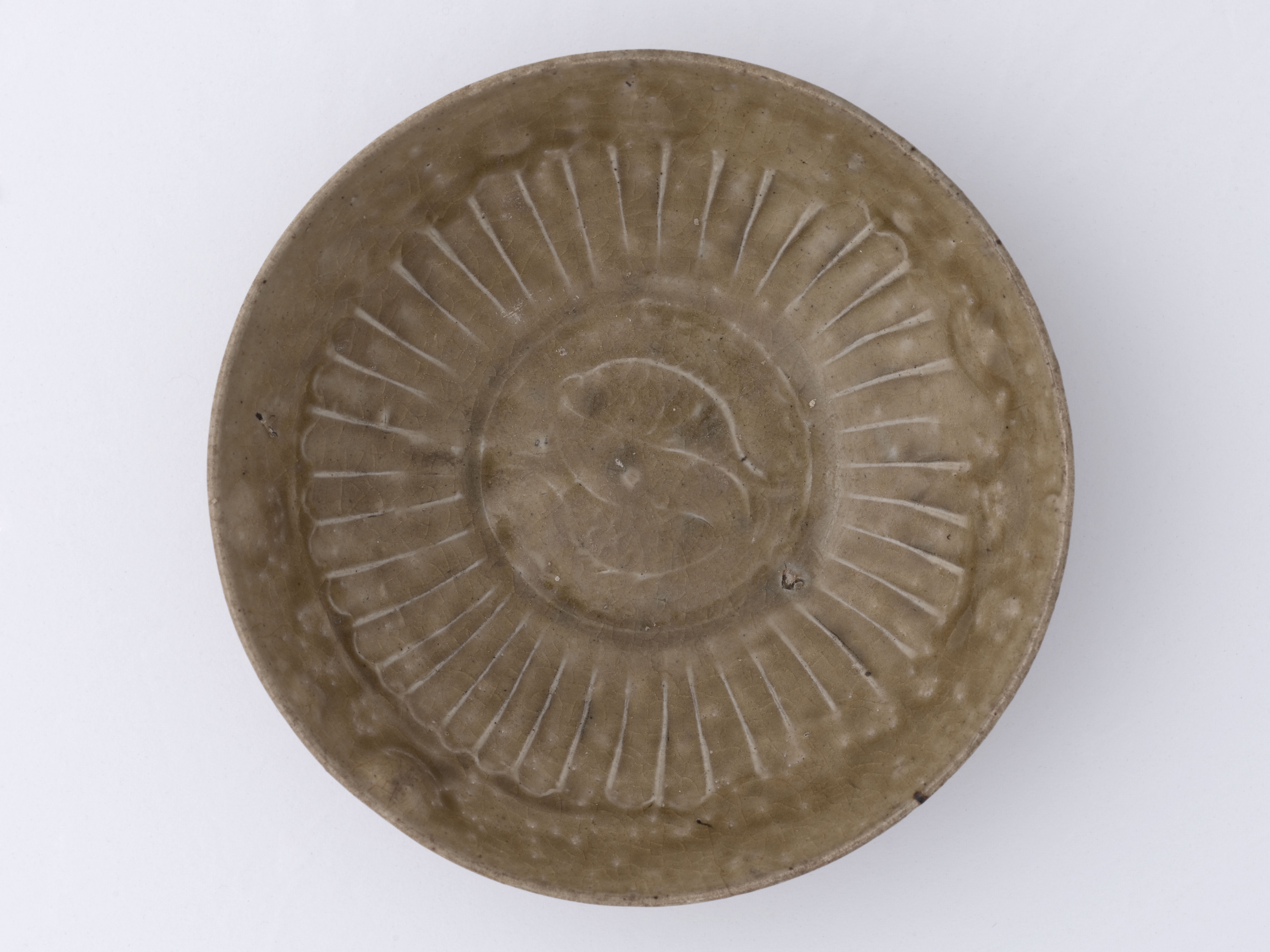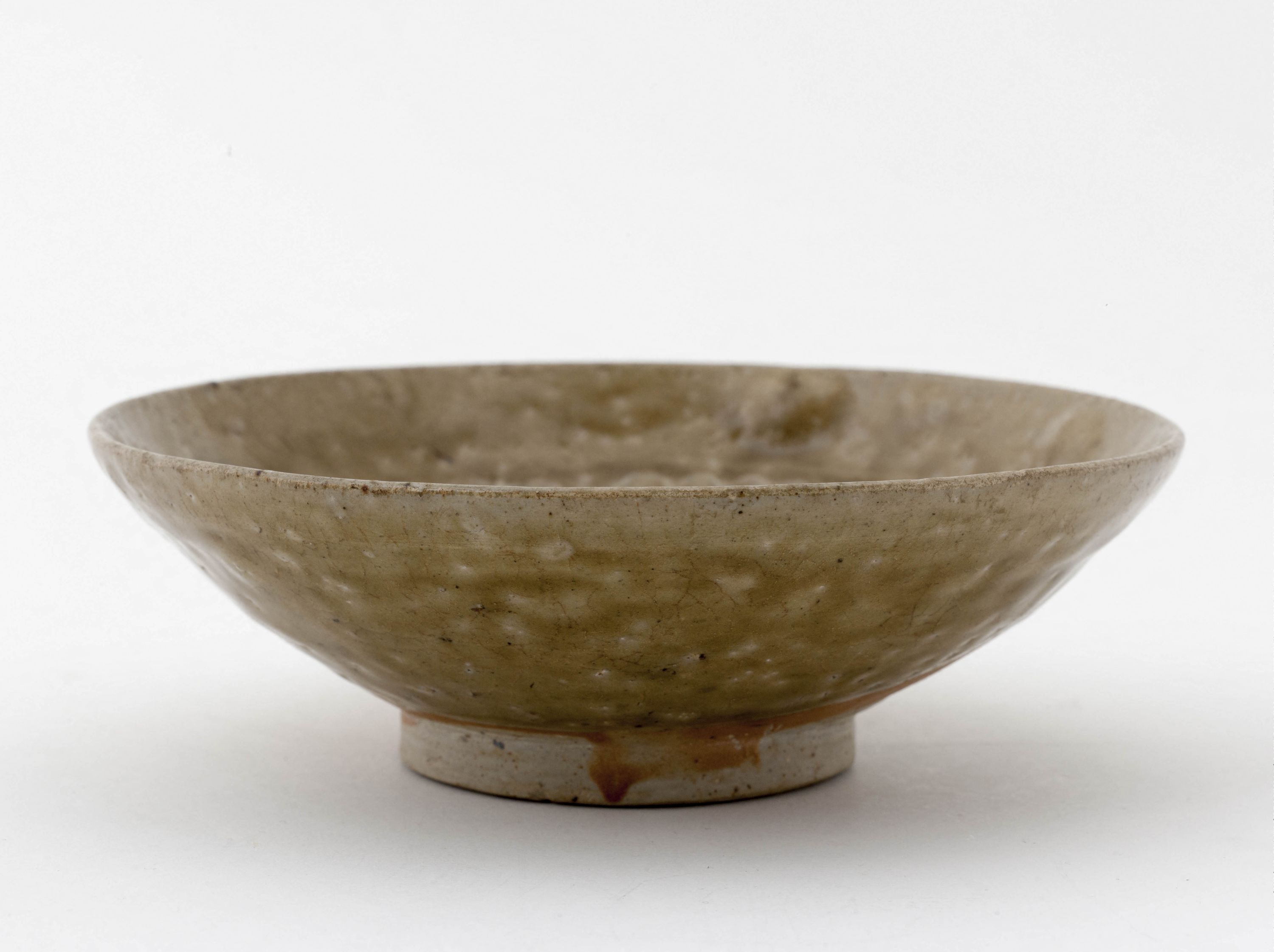
Coupe
Grès, Céladon
Coupe (récipient)
Don fouilles : Mission Janse Indochine (1934-1935)
M.C. 8261
The shape and decoration of this dish were produced by placing the light-coloured clay in a mould. After being unmoulded and left to dry, a runny iron-oxide glaze was applied to the piece, except to the foot so that during firing the vitrified glaze would not solder the dish to floor of the kiln. The lack of oxygen in the kiln caused the iron oxide to colour the piece in hues ranging from olive green to brown and shades in between, which appear to have been particularly sought after by Vietnamese potters.
The olive glaze was also more liquid and brilliant than that of the Chinese celadons. It accumulated in the hollows, bringing out the decoration in relief.
In this dish, fillets in light relief trace chrysanthemum petals inside of the dish, and a pair of fish in the bottom stands out equally clearly.
The motif of two fish swimming in profile was very common in the whole of the Chinese sphere of influence as far back as the Han era. Watching them moving gracefully through the water, the ancients saw in them a symbol of harmony in general, that is, of the perfect harmony between living beings and their environment. The position of the fish, which also evoke the symbol of yin and yang or the taijitu 太極圖, supports this idea, in reference to the Chinese concept of the infinite duality of male and female in the natural world.
It also evokes fertility, since fish spawn contains masses of eggs, as well as the idea of abundance, because in Chinese the word fish, yú 鱼, and abundance, yú 餘 , are homophones.
